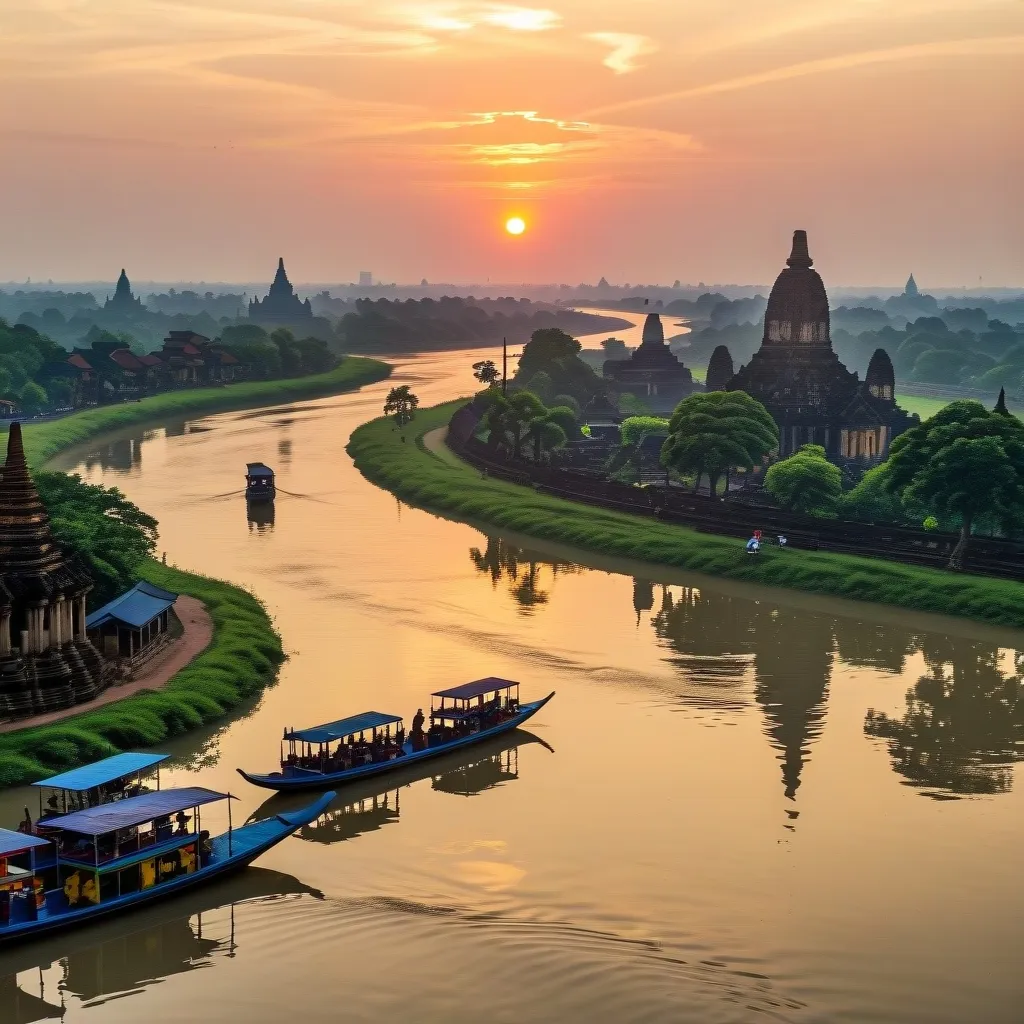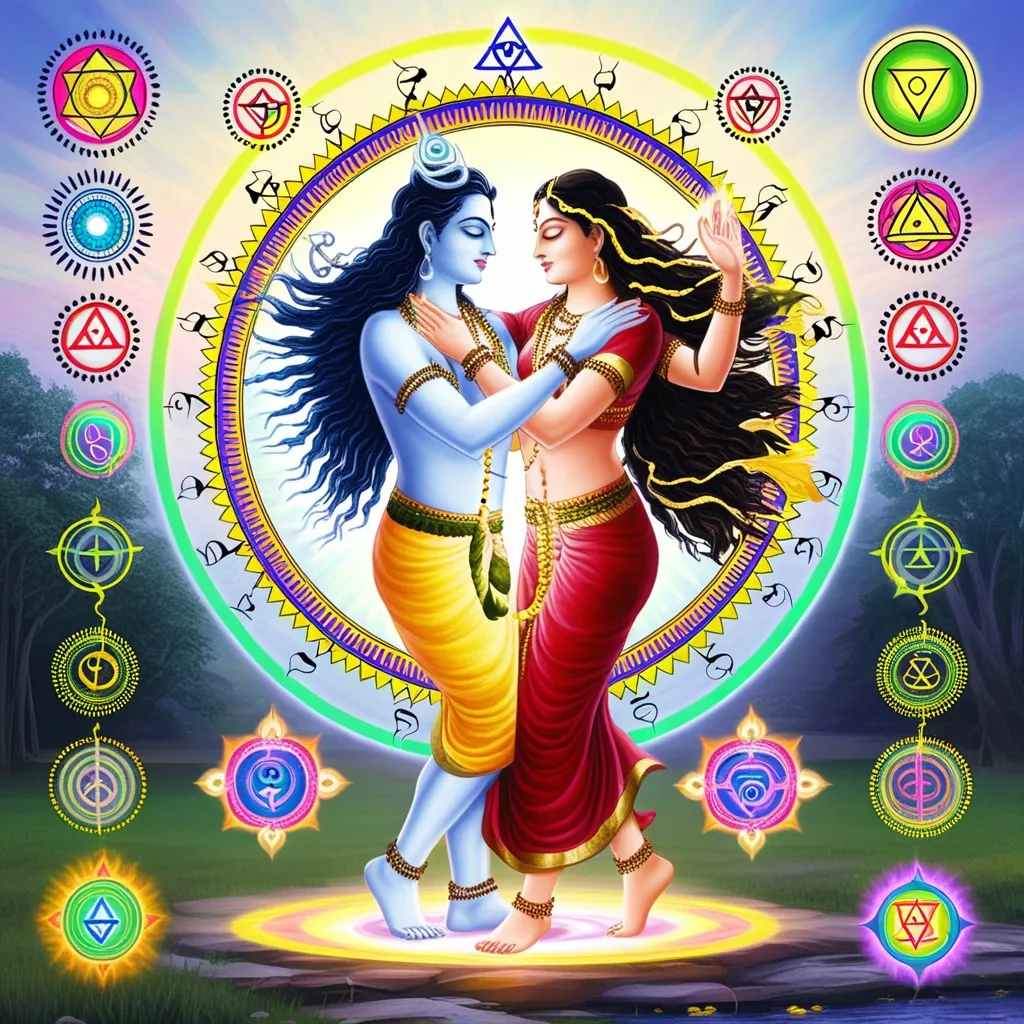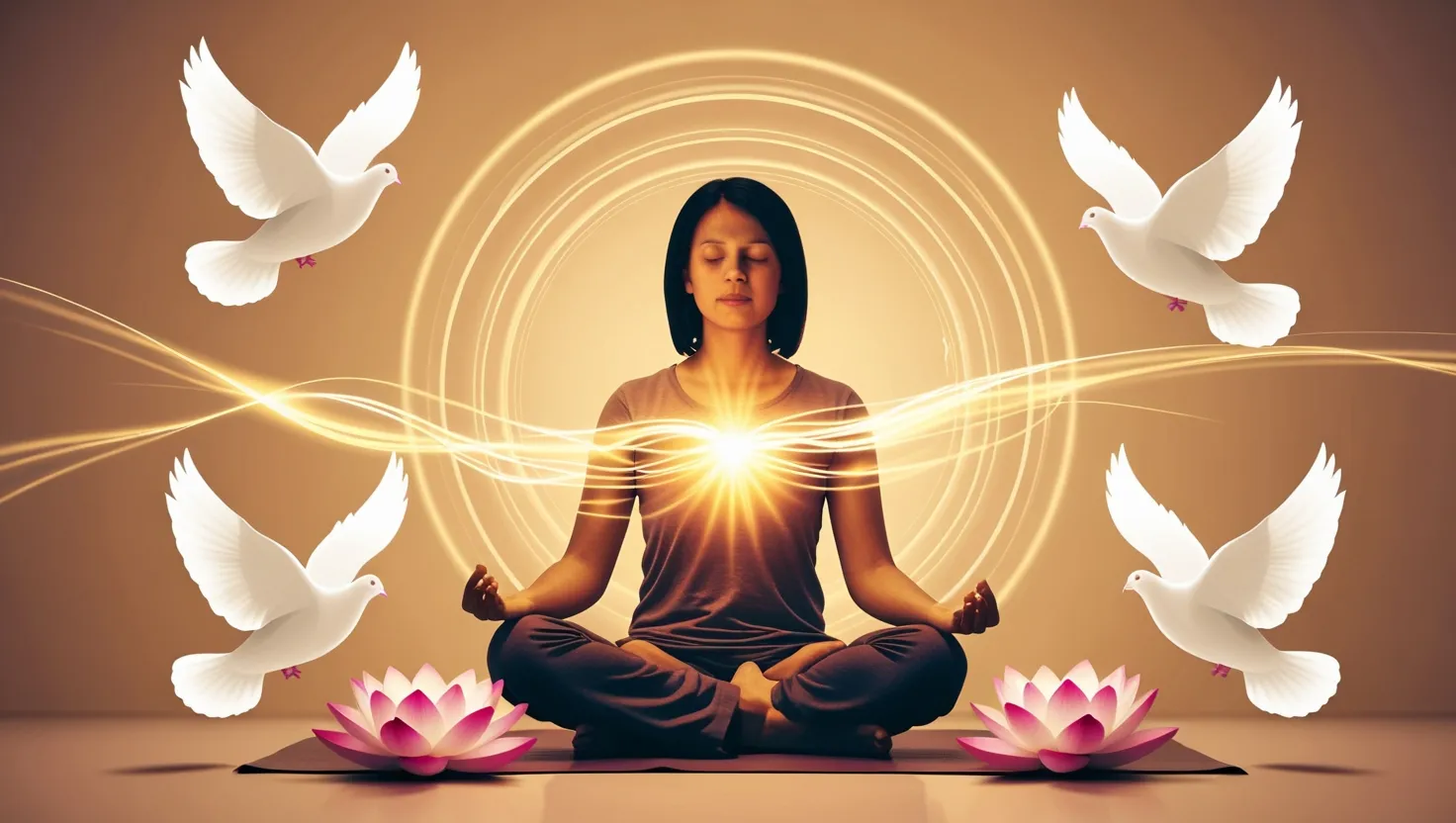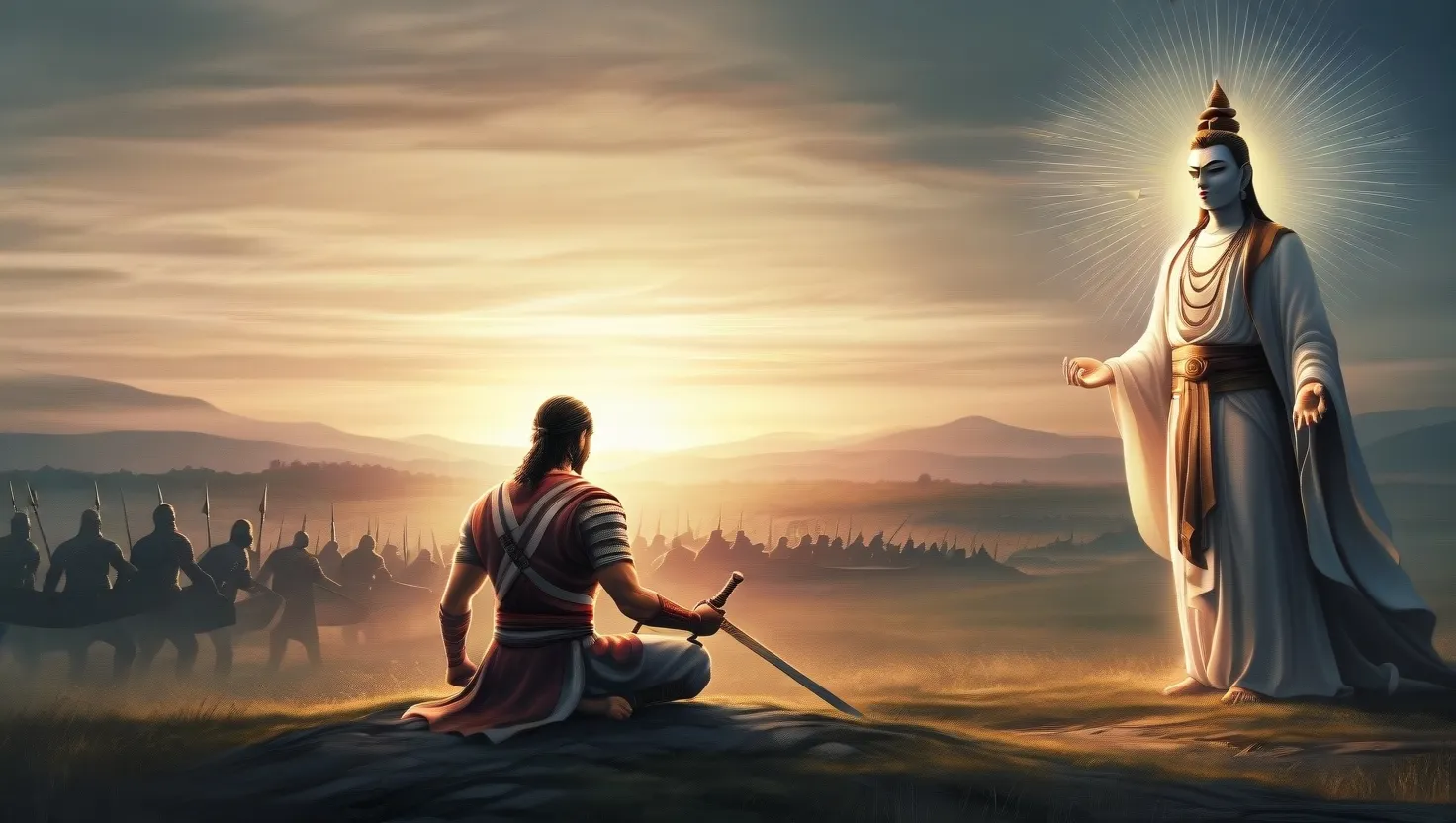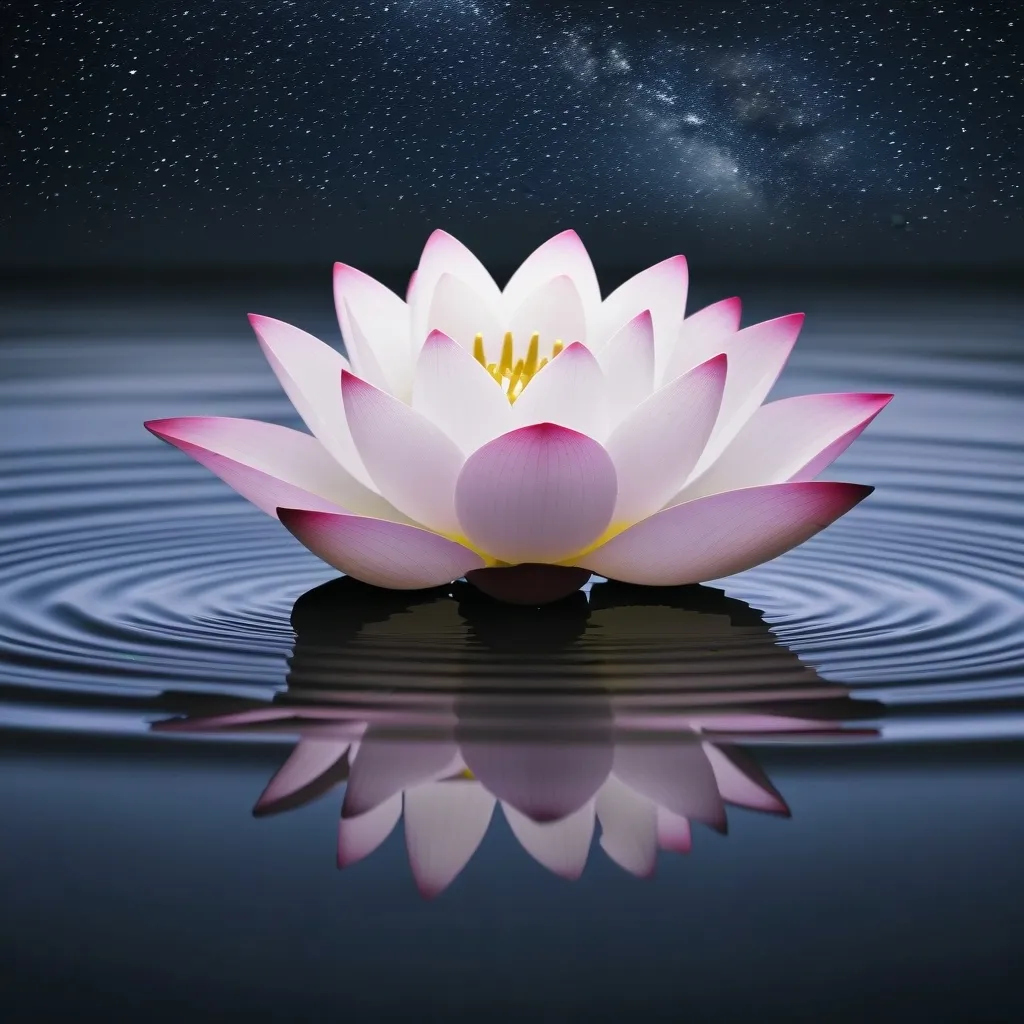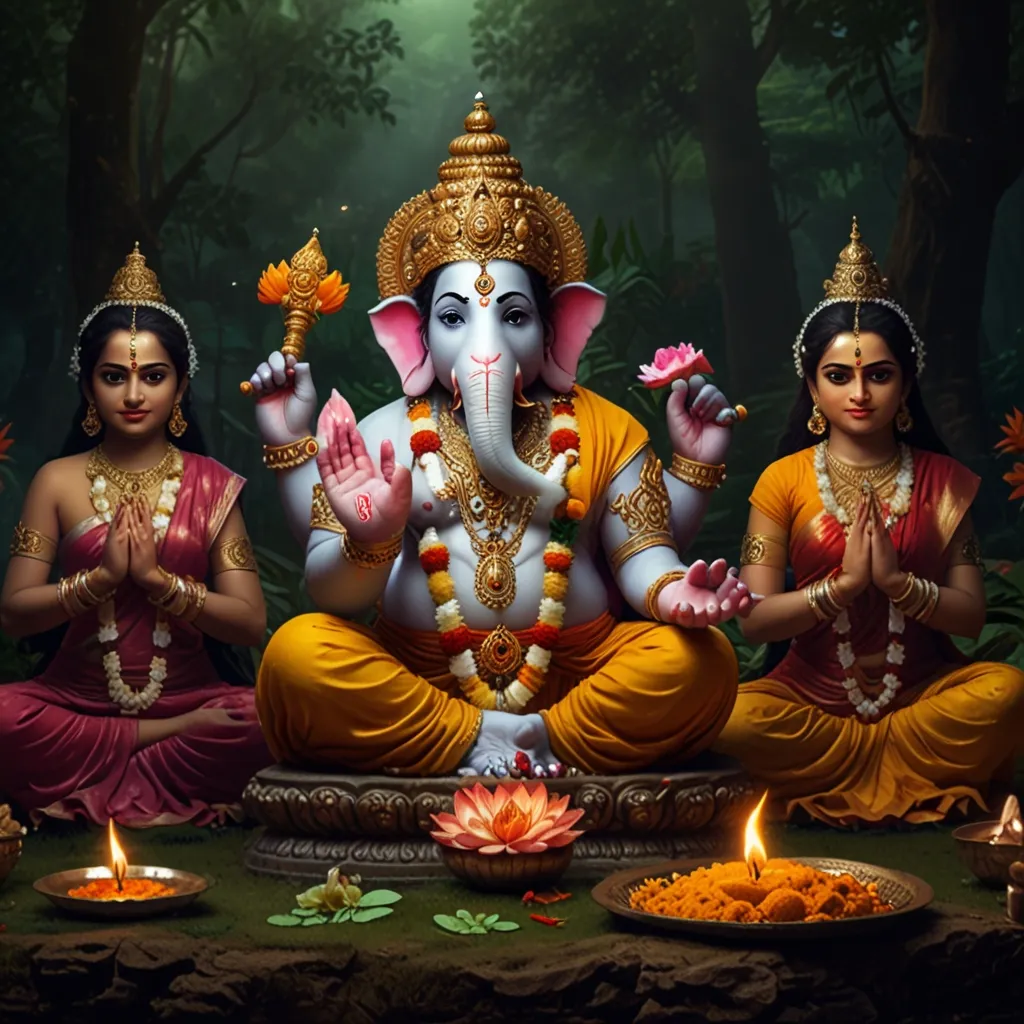The Ganges River: A Sacred Flow of Faith and Culture
The Ganges River, affectionately known as the Ganga, isn’t just another waterway on a map. It’s like the main artery of India, pumping life, spirituality, and culture through the heart of the nation. Imagine a river so revered that people believe a single drop of its water can wash away a lifetime of sins. That’s the Ganges for you!
This mighty river has been silently witnessing the ebb and flow of Indian civilization for thousands of years. It’s seen empires rise and fall, watched cities spring up along its banks, and cradled countless souls seeking salvation. The Ganges is more than just H2O; it’s liquid divinity to millions of Hindus.
Now, let’s dive into the mythological deep end for a moment. In Hindu lore, the Ganges isn’t just a river; it’s a full-fledged goddess! Imagine a celestial being so powerful that her descent to Earth could have flooded the entire planet. That’s our girl Ganga. But thanks to the quick thinking of a devoted king named Bhagiratha and the help of the ever-cool Lord Shiva (who caught her in his dreadlocks, by the way), Ganga made it to Earth without causing a global deluge. Talk about a grand entrance!
This isn’t just some ancient bedtime story, though. For millions of Hindus, this tale is as real as the water flowing through the river. It’s why taking a dip in the Ganges isn’t just a refreshing swim; it’s a soul-cleansing, karma-resetting, spiritual jackpot!
But the Ganges isn’t just about mythology and metaphysics. This river has been the lifeline of countless communities for millennia. It’s like the world’s longest oasis, bringing water, fertile soil, and life to otherwise parched lands. The ancient Vedic civilization? Yep, they set up shop right along the Ganges. Some of India’s holiest cities like Varanasi, Haridwar, and Prayag? They’re all Ganges riverside properties.
Speaking of Varanasi, let’s take a little detour there. This city is like the spiritual Las Vegas of India, minus the casinos and with way more temples. It’s believed that dying in Varanasi and having your ashes immersed in the Ganges is a one-way ticket to liberation from the cycle of rebirth. No wonder it’s on the bucket list of many Hindus!
Now, you might be thinking, “Okay, it’s a big deal for Hindus, but what about everyone else?” Well, the Ganges has a way of transcending religious boundaries. Its banks have been home to people of various faiths for centuries. The river has inspired poets, artists, and philosophers across cultures. It’s like the ultimate mixer, bringing together diverse groups in a shared reverence for its waters.
Let’s talk about the Ganges’ supporting cast for a moment. In Hindu tradition, it’s part of the Saptanadi, or the seven sacred rivers. Imagine a superhero team, but instead of capes, they’ve got currents, and their superpower is purifying souls. The Ganges is like the Captain America of this riverine Avengers, leading the charge with the Yamuna, Sarasvati, and others in tow.
Now, if you think the Ganges is just about big, dramatic gestures like washing away sins or granting liberation, think again. This river plays a starring role in the everyday lives of millions. Its water is used in countless Hindu rituals, from the cradle to the grave. Having a baby? Ganges water might be part of the naming ceremony. Getting married? Don’t forget to include some Ganga jal (Ganges water) in the rituals. It’s like the Swiss Army knife of sacred waters – there’s a use for it in almost every situation!
But here’s where things get really interesting. The Ganges isn’t just about the past; it’s very much a part of India’s present and future. In recent years, there’s been a growing awareness about the environmental challenges facing the river. Pollution, overuse, climate change – the Ganges is battling it all. It’s like watching your favorite childhood superhero face their toughest challenge yet.
The good news? People are stepping up. There are massive clean-up efforts underway, combining modern technology with age-old reverence for the river. It’s like seeing science and spirituality join forces for a common cause. Pretty cool, right?
Now, let’s get a bit personal for a moment. Imagine growing up in a culture where a river is not just a geographical feature, but a living, breathing entity that’s part of your family. For many Indians, the Ganges is exactly that. It’s a grandmother figure, nurturing, forgiving, and always there. People talk to the river, make offerings to it, and seek its blessings like they would from a revered elder.
This personal connection to the Ganges is something that often baffles outsiders but is second nature to those who’ve grown up with it. It’s not uncommon to see people carrying small bottles of Ganges water back to their homes, hundreds of miles away. This water becomes a part of their daily prayers, a tangible connection to the divine in their own homes.
The Ganges also plays a huge role in the cycle of life and death for many Hindus. It’s common for people to bring their elderly or terminally ill relatives to cities like Varanasi, hoping they can spend their last days by the river. And after death, many Hindus have their ashes immersed in the Ganges, believing it helps the soul in its onward journey. It’s a poignant reminder of the river’s role as both a giver of life and a guide in death.
But it’s not all solemn rituals and serious spirituality along the Ganges. The river is also a place of joy, celebration, and everyday life. During festivals like the Kumbh Mela, millions gather along its banks in what’s often described as the largest peaceful gathering of humans on the planet. It’s like Woodstock, but with more spirituality and less rock ‘n’ roll (though there’s plenty of music too!).
Even on regular days, the ghats (steps leading to the river) are a hive of activity. You’ll see people doing their laundry, kids playing cricket, holy men meditating, tourists snapping photos, and cows… well, being cows. It’s a microcosm of India itself – chaotic, colorful, and somehow deeply spiritual all at once.
Now, let’s zoom out a bit and look at the bigger picture. The Ganges isn’t just important for its spiritual significance; it’s a major player in India’s economy too. The Gangetic plain, nourished by the river, is one of the most fertile and densely populated regions in the world. It’s like the river decided to play Farmville in real life, and won!
But with great power comes great responsibility, and the Ganges is feeling the weight of its importance. The very reverence that makes it sacred also poses challenges. How do you balance the needs of millions of devotees with the ecological health of the river? It’s a question that’s keeping scientists, policymakers, and religious leaders up at night.
There’s also the matter of climate change. The Gangotri Glacier, where the Ganges originates, is receding at an alarming rate. It’s like watching the river’s birthplace slowly disappear. This has huge implications not just for the spiritual aspects of the Ganges, but for the millions who depend on it for their livelihoods.
But here’s the thing about the Ganges – it’s a survivor. It’s weathered invasions, empires, and now it’s facing its modern challenges head-on. There’s a growing movement to blend traditional reverence for the river with modern conservation techniques. It’s like watching an ancient goddess get a 21st-century makeover!
As we wrap up our journey along the Ganges, it’s clear that this isn’t just a river; it’s a living, breathing part of India’s soul. It’s a reminder of the deep connections between nature, spirituality, and human life. The Ganges challenges us to think beyond the physical, to see the sacred in the everyday, and to recognize our own role in preserving something greater than ourselves.
Whether you’re a believer, a skeptic, or somewhere in between, there’s something undeniably powerful about standing on the banks of the Ganges. It’s a place where history, mythology, and the present day collide in a swirl of incense, chanting, and flowing water. It’s a reminder that in our fast-paced, often disconnected world, there are still places that can stop us in our tracks and make us ponder our place in the grand scheme of things.
So, next time you hear about the Ganges, remember – it’s not just a river. It’s a flowing, ever-changing story of faith, culture, and the enduring human spirit. And who knows? Maybe someday you’ll find yourself on its banks, dipping your toes into waters that have touched the souls of millions. Now that’s what I call a deep dive!
